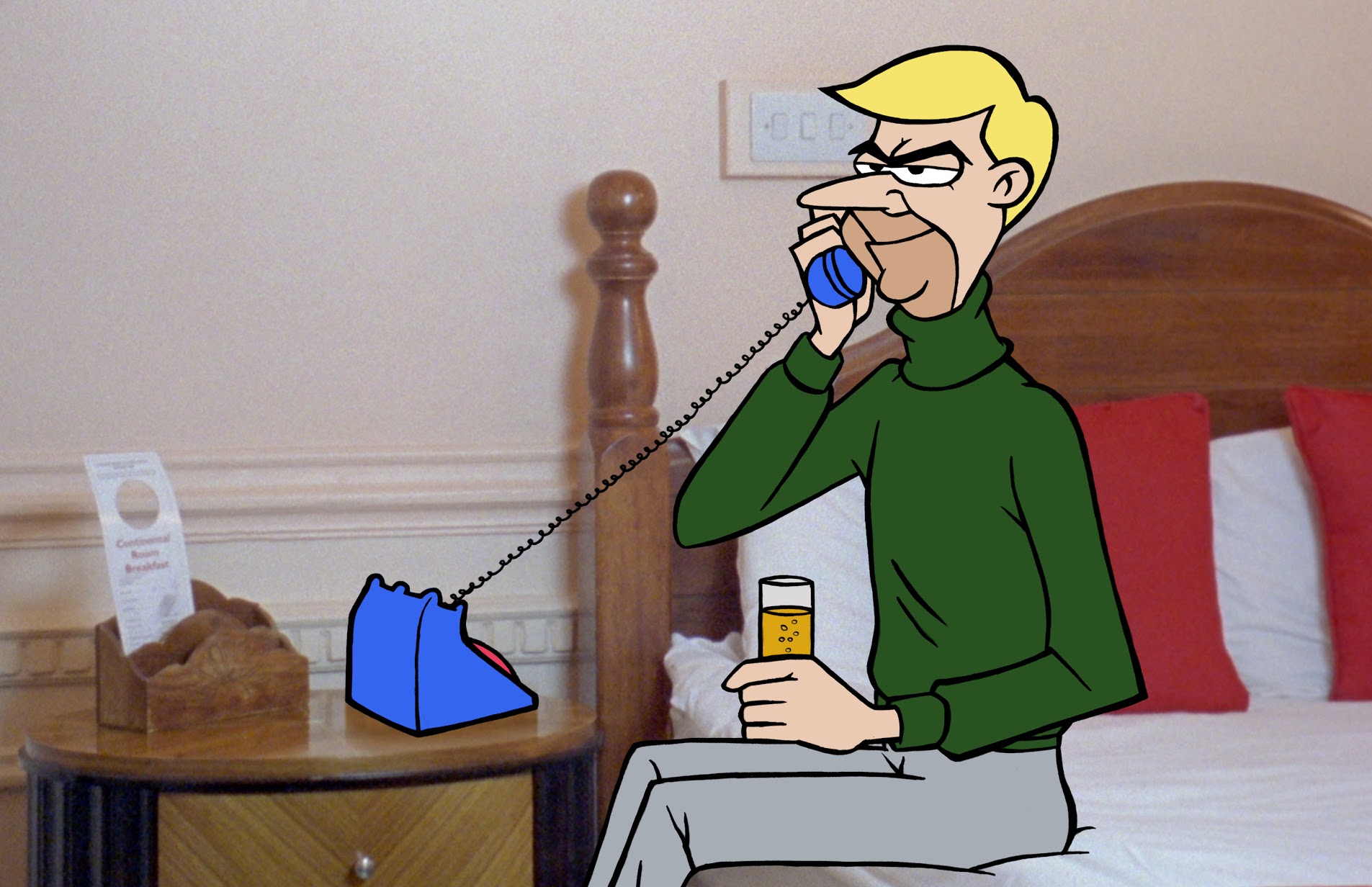Memorable images, moments, qualities, techniques and scenes from the experimental and artists’ moving image strand.
Evidentiary Bodies (Barbara Hammer, 2018)
When Daniel Kasman covered the Locarno Festival on Notebook in 2017 he hit upon a great way of engaging with standout work. In his introduction, he explained that he would be “looking for specific images, moments, techniques, qualities or scenes…that grabbed me and have lingered past and beyond the next movie seen, whose characters, story and images have already begun to overwrite those that came just before.” This seemed to me like a great way to engage with the creative work in a milieu like a festival - to concentrate on that which lingers rather than attempting to highlight everything. As such, I’ve shamelessly pilfered this very technique for the ALT/KINO festival reports.
In this instance, I was looking for a handful of memorable moments and motifs from the London Film Festival’s ‘Experimenta’ strand programmed by Benjamin Cook, Helen De Witt and William Fowler.
Make Me Up (Rachel Maclean, 2018)
Found audio and ‘volume’ in Rachel Maclean’s Make Me Up.
Found audio, namely Kenneth Clark’s narration from the documentary series Civilisation, provides a large swathe of the dialogue in Rachel Maclean’s narrative feature debut. Maclean herself plays a character called Figurehead, who is both teacher and ultimate authority in a garish, kitschy dystopia – and she speaks entirely in clippings of Clark’s voice discussing art, society, and gender. It’s a pointed, powerful technique that riffs both on the uniformly male voice of the establishment (artistic and otherwise) and takes a swipe at women who act as mouthpieces for the silencing of female voices. That silencing plays into the wider plot, which re-imagines the Suffragette movement in a self-image-obsessed digital age by following the rising tide of rebellion amongst Figurehead’s unwilling, audience-pleasing young women whose ‘volume’ can literally be turned down. The naming of these women as Alexa, Siri etc. adds a further entanglement with ongoing dialogues surrounding the use of female voices for household assistants and the inherent equating of such with domestic subservience.
Aykan (Sebastian Buerkner, 2018)
Occular dissonance in Sebastian Buerkner’s Aykan.
The only visual cinematic experience I can compare to the effect created in Sebastian Buerkner’s mind-scrambling Aykan is during Godard’s Goodbye to Language 3D when what initially appears to be a traditional stereoscopic image is pulled apart by the individual image for each eye panning in different directions. Watching that moment in Godard’s film was almost painful and before the screening of Aykan the audience were warned to let the film wash over you rather than trying to process the detail of what was on screen, to save us dislocating an eye socket. Unlike in Goodbye to Language 3D, here images aren’t pulled apart, they’re overlaid. This is, in essence, one of cinemas oldest tricks - double exposure - but in the context that your mind, through polarized 3D glasses, is attempting to bend the two layers into a single multidimensional whole. It’s impossible to resist closing one eye at time to see the often similar yet different shots, but it is the effect, of seeing something that seems at once familiar and alien, and which your brain is desperately trying to parse, that makes Aykan - an attempt to convey the dissonance of being an immigrant in a foreign city - such a striking and memorable work.
Tåke (Inger Lise Hansen, 2018)
The enveloping silence of Inger Lise Hansen’s Tåke
Inger Lise Hansen’s Tåke (2018) is study in landscape as defined by enveloping fog (‘Fog’ is also the title in translation). It’s a mysterious, mournful peer into the rolling grey as it consumes the Azores, Oslo, Beijing, and Newfoundland - a considerably less lovestruck work than Tony Chun-Hui Wu’s The Legend in the Mist - that sees the screen inhabiting a psychological space of loss. There is an explicit sense of loss in the passing of the film’s producer during production, and a visual sense of it in the disappearing of topography into the fog. “I have also a loss of hearing that comes into the soundtrack,” Hansen explained in the post-screening Q&A. The sound design is perhaps Tåke’s most striking element, an ongoing loss of audible frequencies mimicking the noice cancellation of fog, but also the director’s encroaching deafness. This knowledge imbues the work with a lingering poignancy that it might not have otherwise had. The silence is retrospectively deafening.
Flame (Sami van Ingen, 2018)
Combustion and desire in Sami van Ingen’s Flame
In 2015, at La Cinémathèque Française in Paris, some nitrate film was found that held a short sequence from the middle of a lost Finnish film, Teuvo Tulio’s Silja - Fallen Asleep When Young (1937). From scans of the deteriorated remains, Sami van Ingen has constructed a “fragmentary melodrama” complete with the surviving stock’s imperfections. By slowing the footage down the nature of the warping and damage to the film becomes mesmerising - as seen in similar work by Bill Morrison - but here the fact that the rest of the film was lost in a studio fire in 1959 changes our perception. Instead of seeing the ravages of time, we see the ravages of heat; the browning of the stocks starts to look like singing, the cracking of the image is the bubbling of burning nitrate. The fact that the scenes involve furtive interactions between men and women drawn out over prolonged glances gives the impression that desire is literally burning up the screen. Even the drying of a mug becomes a sensual act.
Doozy (Richard Squires, 2018)
Cartoonish villainy in Richard Squires’ Doozy
Using animation as documentary reconstruction is a relatively popular conceit; from Winsor McCay's Lusitania (1918) to Ari Folman’s Waltz with Bashir (2008) animated segments are used to stand-in for moments that vérité filmmaking couldn’t capture. In the case of Richard Squires’ Doozy, the use of a cartoon character called Clovis as a stand-in for the film’s ostensible subject Paul Lynde is a little more interesting than usual. The film explores Lynde’s career as the voice of three Hanna-Barbera villains and how his hysterical male laughter and his voice’s camp-ness were part of a wider othering of queerness and its association with criminality. The appearances of Clovis in nighttime San Francisco and LA constitute reconstructions of alleged, and quite extreme, events in Lynde’s life that might align him with immorality and subversion. As such, the appearances of Clovis both allow these supposed events to appear in the film, but also reflect the use of animated villains to align homosexuality with otherness and criminality.
The Sun Quartet (Colectivo Los Ingrávidos, 2018)
Repetition as the act of witnessing in Colectivo Los Ingravidos’ The Sun Quartet
There is so much that would be worth discussing in Colectivo Los Ingravidos’ deeply moving and inspiring The Sun Quartet, four short films that eschew traditional formal and narrative techniques in a radical exploration of national psyche in the wake of the disappearance of 43 Mexican students. The anonymous collective was born of the desire to dismantle “the audiovisual grammar that the aesthetic-television-cinematic corporativism has used to guarantee the diffusion of one audiovisual ideology.” What was most striking seeing these films with an audience, though, was the final short film November 2 / Far from Ayotzinapa in which a piece of prose - like a poem for the dead - is read by people in almost a dozen different languages. A sequence of films demanding action and support ends with an expression of solidarity through an act of witnessing together, but the repetitive nature of the short saw audience members leaving throughout. The film was beautiful and moving and its message only became more powerful in the wake of viewers failing, or refusing, to understand it.
Between My Flesh and the World’s Fingers (Talena Sanders, 2018)
The reflection of a rebellious spirit in Talena Sanders’ Between My Flesh and the World’s Fingers
There can often be a disconnect between a radically creative artist and the way they are portrayed in cinema; traditional documentary and formulaic biopic can feel inadequate in the face of pioneering energy. In the case of Talena Sanders’ essayistic exploration of the life and work of ‘the Wild Woman of Butte', Montana, Mary MacLane. She was a lesbian poet, author - and film pioneer - at the beginning of the 20th century, a provocative diarist experimental in her projections of self and Sanders adopts a similarly inventive approach to telling her story. The film weaves archival material, Super8 reconstruction, and landscape photography into one another and on top of them layers excerpts from MacLane’s writing. The result is a palimpsest, a living invocation that captures the spirit of its subject in its form and is equally as defiant of categorisation as she was.
Monelle (Diego Marcon, 2018)
Flashbulb freezeframes in Diego Marcon’s Monelle
In Monelle, Diego Marcon reconstitutes Marcel Schwob’s 1894 novella The Book of Monelle into an unsettling structuralist horror exploring the shadowy nooks of Casa del Fascio in Como, Italy. The building was an architectural showcase of the fascist regime and Marcon morphs the aphorisms of Schwob’s work into a series of flashbulb lit dioramas in which the audience only just get the chance to assess what they are seeing before it disappears again into the inky darkness. The scenes consist of young girls sleeping (perhaps the sisters of Monelle) and other frozen humanoid figures (computer-generated but looking like waxwork) giving the space a haunted aspect that resembles the enveloping black of Herwig Weiser’s Government House, which similarly transformed a Communist building in Moscow into a haunted house. In Monelle the horrors of past flicker in the dying of the light.









